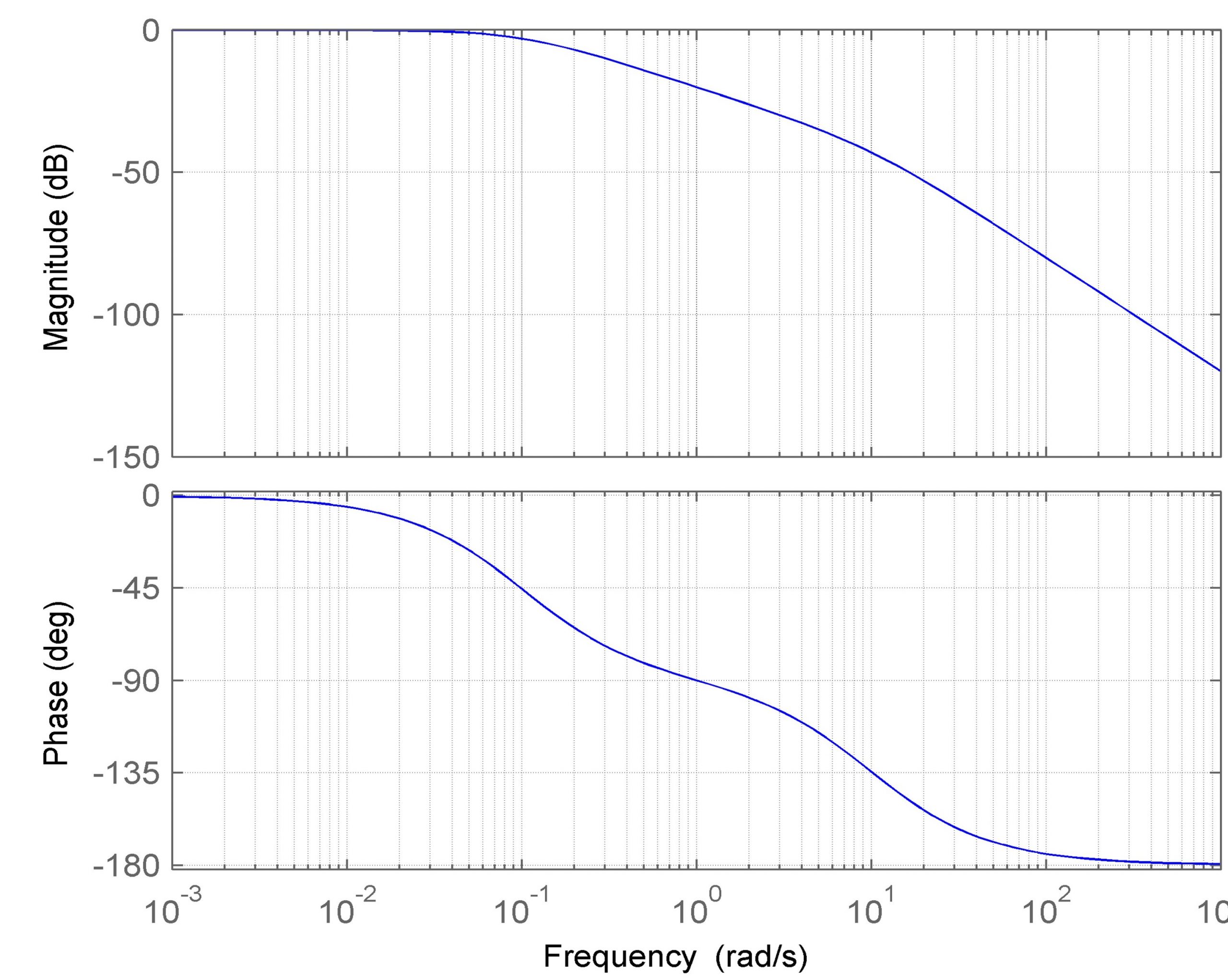17 System realization
The Bode diagram of a system can be obtained by applying sinusoidal signals with different frequencies to the input of the system and observing the output. The Bode diagram is then used to analyze the system and derive its transfer function.
Objectives
The following objectives will be covered as you go through the experiment procedure.
- Become familiar with direct form I and II realizations
- Work with cascade and parallel realizations
- Become familiar with transposed realization
- Use RLC circuits for realization
- Use op-amp for realization
Procedure
1. Using the Bode diagram shown in Figure 9.1, derive the transfer function of the system.
2. Realize the transfer function using the direct forms. Then, simulate them in Simulink.
a. Compare the step response of both realizations with each other.
b. Which realization do you think has a better performance?

3. Realize the transfer function using the cascade and parallel forms in Simulink.
a. Are their step responses different?
b. From a practical standpoint, compared to canonic direct form, the parallel and cascade forms are preferred because they are numerically less sensitive to small parameter variations in the system. Can you show why this is true?
4. In Simulink, realize the transfer function using the transposed form.
5. Implement the transfer function using RLC circuit.
a Simulate it in Simulink using Simscape library.
b. Validate its step response.
c. What are the complications with this implementation?
6. Implement the realization using op-amps. Simulate it in Simulink and validate its step response.
7. Inject noise to the input and check the response of both physical realizations.

